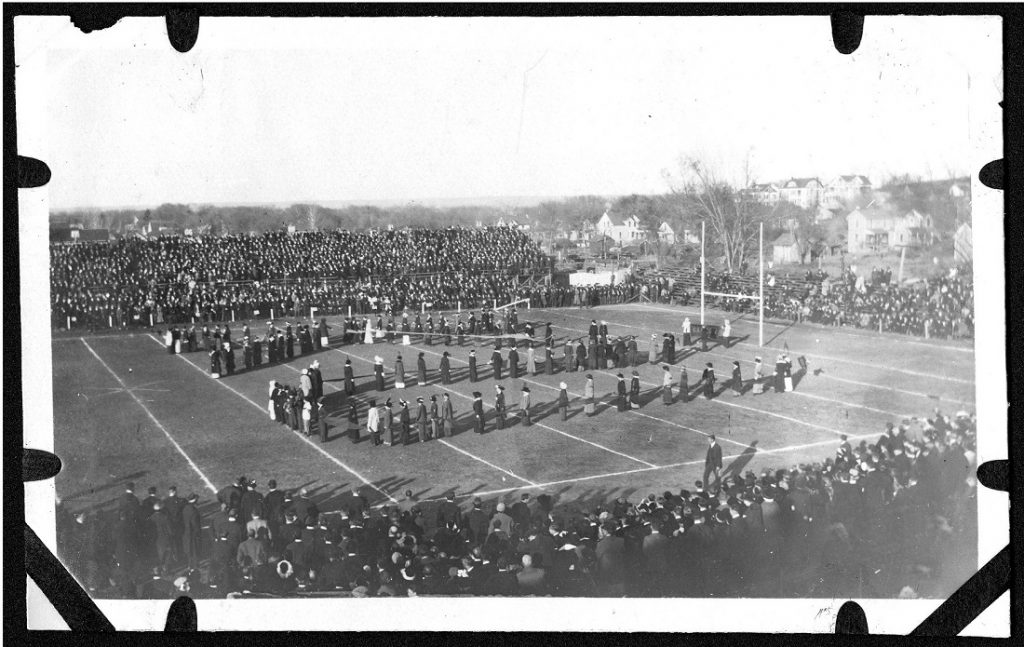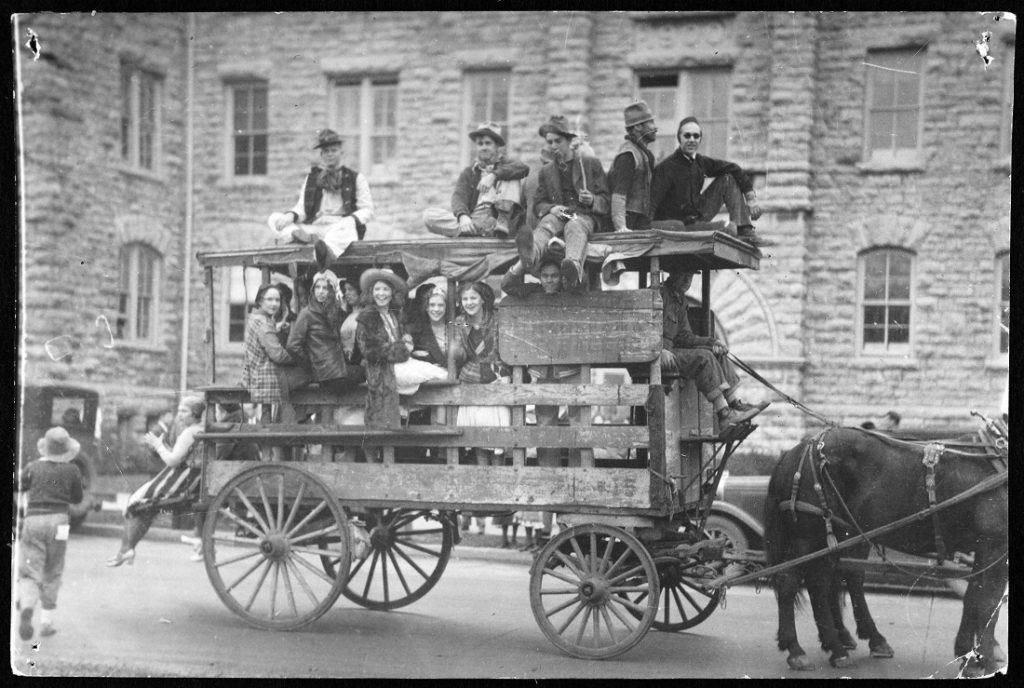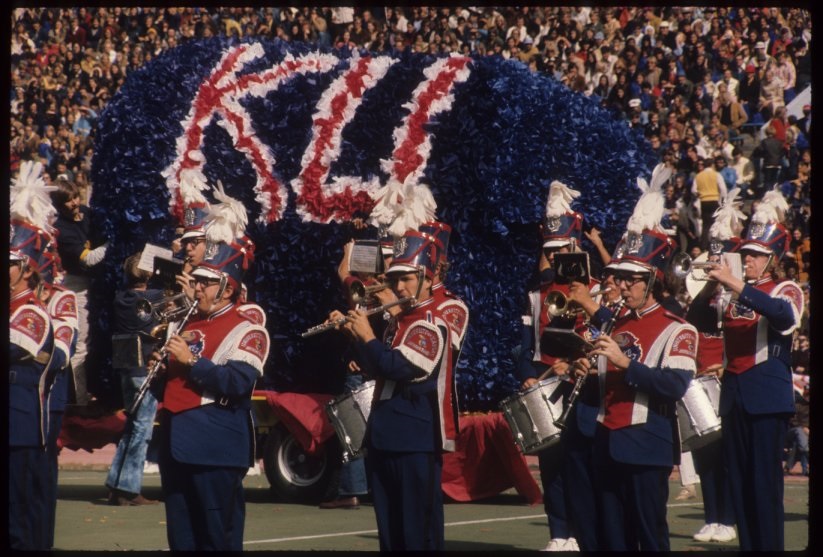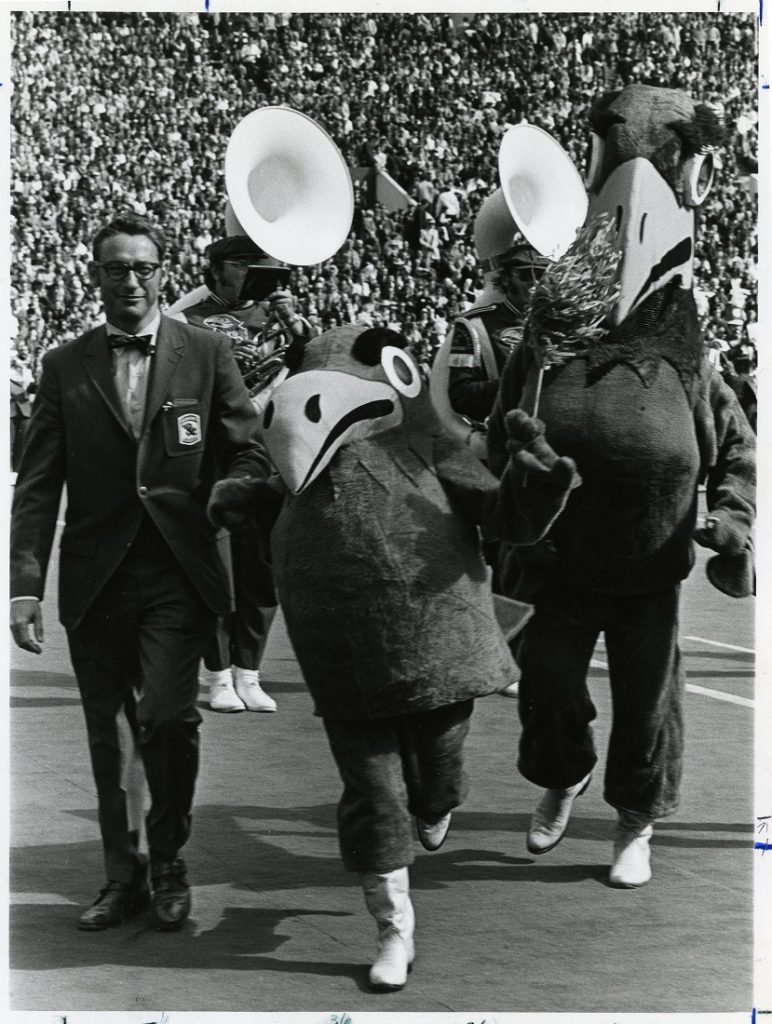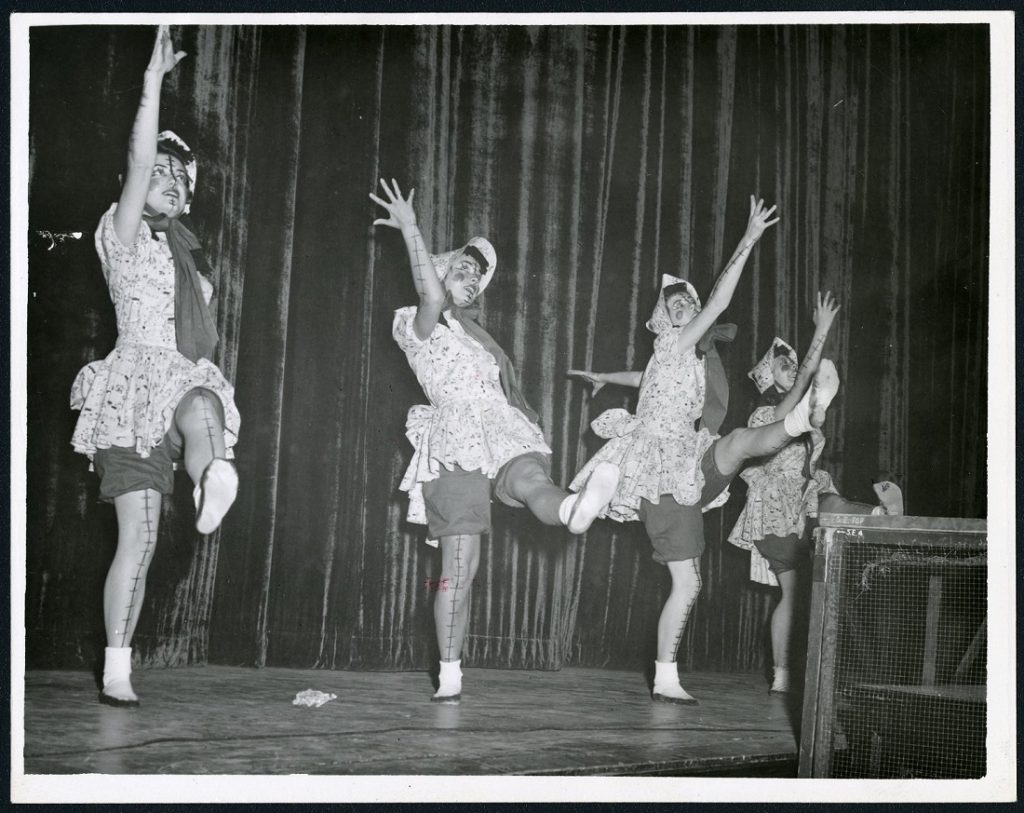Throwback Thursday: Homecoming History Edition
September 20th, 2018Each week we’ll be posting a photograph from University Archives that shows a scene from KU’s past. We’ve also scanned more than 34,800 images from KU’s University Archives and made them available online; be sure to check them out!
An early KU homecoming football game at McCook Field, 1910s. University Archives Photos.
Call Number: RG 71/1 Prints: Student Activities: Homecoming (Photos).
Click image to enlarge (redirect to Spencer’s digital collections).
For over a century, the tradition of homecoming has been observed across KU and the city of Lawrence. Originating as an opportunity for alumni to revisit campus, the first homecoming game was played against the University of Missouri in November 1912, with KU winning 12-3. Over the next decade, the popular event spun off into many traditions. Some – like homecoming parades – have endured to this day, while others – like the annual tiger bonfire and a day dedicated to dressing like hobos – have disappeared.
Students dressed up for Hobo Day, 1931. The raucous event became an
integral part of homecoming festivities at KU. University Archives Photos.
Call Number: RG 71/9 1931 Prints: Student Activities: Hobo Day (Photos).
Click image to enlarge (redirect to Spencer’s digital collections).
Homecoming mostly continued on in this fashion for nearly six decades – a week of parties, rallies, and promotional activities leading up to the big football game. It wasn’t until 1970 that the next major development in the history of KU homecoming took place. In 1969, senior student Janet Merrick was crowned KU’s final homecoming queen. The selection of the homecoming queen had been part of the celebration since 1925. Protests surrounding the war in Vietnam and a growing sense of student-establishment tension deemed the tradition to be clashing with modern sensibilities. Additionally, frustrated with a process that had never resulted in a black homecoming queen, KU’s Black Student Union first chose its own queen in 1969. The following year was the first homecoming celebration without a queen, and the tradition remains shelved. The Black Student Union continues to crown a homecoming queen each year.
Homecoming Queen Janet Merrick, 1969. University Archives Photos.
Call Number: RG 71/1 1969 Prints: Student Activities: Homecoming (Photos).
Click image to enlarge (redirect to Spencer’s digital collections).
The following year, KU introduced a second Jayhawk mascot. During halftime of the 1971 homecoming game against Kansas State University, Baby Jay was unveiled to the student body after hatching from a giant blue egg. Big Jay and Baby Jay have been staples of the university spirit team ever since.
Baby Jay egg, 1971. University Archives Photos. Call Number: RG 0/25 1971
Negatives: University General: Jayhawk mascot, dolls, etc (Photos).
Click image to enlarge (redirect to Spencer’s digital collections).
Chancellor Chalmers with new Baby Jay at Homecoming, 1971.
University Archives Photos. Call Number: RG 2/13 1971 Prints:
Chancellors: E. Laurence Chalmers (Photos).
Click image to enlarge (redirect to Spencer’s digital collections).
In 1993 there may have been some consideration in reviving the homecoming court; however, a new tradition began instead. An award was given to students that exhibited academic excellence, leadership, and a strong sense of service to the Lawrence community. This became the KU Excellence in Community, Education and Leadership Awards, or the KU Ex.C.E.L. Awards. This honor has been given to two students, every homecoming, for the past twenty-eight years.
Homecoming in more recent years has seen the emergence of new traditions. For example, at Chalk ‘n’ Rock, student groups and organizations create elaborate chalk murals along Wescoe Beach. The Jayhawk Jingles continue as a new version of the Jayhawk Follies; students compete in a contest of musical performances.
Four women dancing on stage dressed as dolls in the Jayhawk Follies, 1954.
University Archives Photos. Call Number: RG 71/1 1954 Prints: Student Activities:
Homecoming (Photos). Click on image to enlarge (redirect to Spencer’s digital collections).
This year, KU faces off against Oklahoma State in the 106th homecoming football game. The theme this year is “Home on the Hill,” a call for alumni to return home to their University as they always have and for current students to further solidify their own homes on the hill.
Mallory Harrell
KU Museum Studies graduate student and University Archives intern

